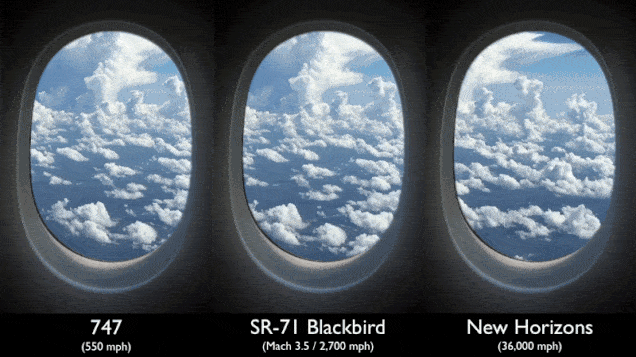A month ago the New Horizon spacecraft made a historic flyby over Pluto, marking the first time a man-made instrument has ventured this far in the planetary solar system. The journey took nine years, which might seem like a lot, but you need to remember we’re talking about nine billion miles. That’s quite fast, around 4 km/second actually. To get a sense of the kind of velocity involved, Clay Bavor – a Google product VC – made this GIF showing what flying at 11,278 metres would like from the cockpit of a Boeing 747, a SR-71 Blackbird and, finally, New Horizons. It quite speaks for itself.
For the simulation, Bavor used the top speeds for each vehicle: 885 km/h (747), 4,345 km/h (Blackbird) and 57,936 km/h (New Horizons). At this cruise speed, it would take you only 5 minutes to reach New York from San Francisco riding inside a New Horizons probe. Of course, there’s something called friction and at this speed the friction energy would be extremely intense. You’d only last a couple of seconds.
New Horizons isn’t done yet. While its main mission was to survey Pluto and its moons, the probe is now on route toward the Kuiper Belt, a time capsule where freezing cosmic bodies go about their business as they have since the solar system was first formed 4.6 billion years ago. Specifically, New Horizons is destined for 2014 MU69, a comet-like body. The encounter is expected on January 1, 2019.
via Science Alert










